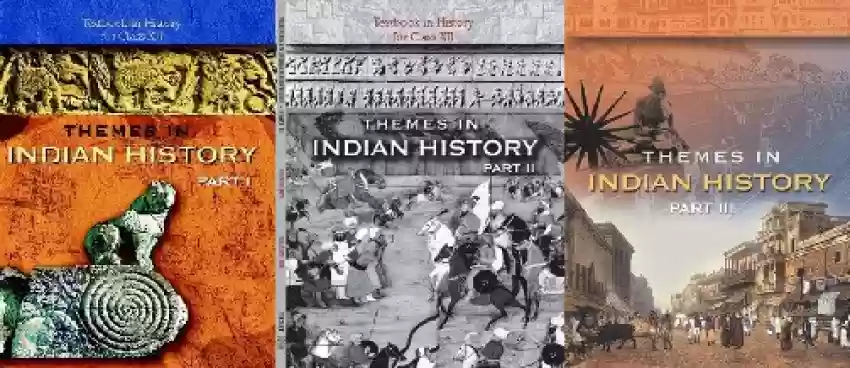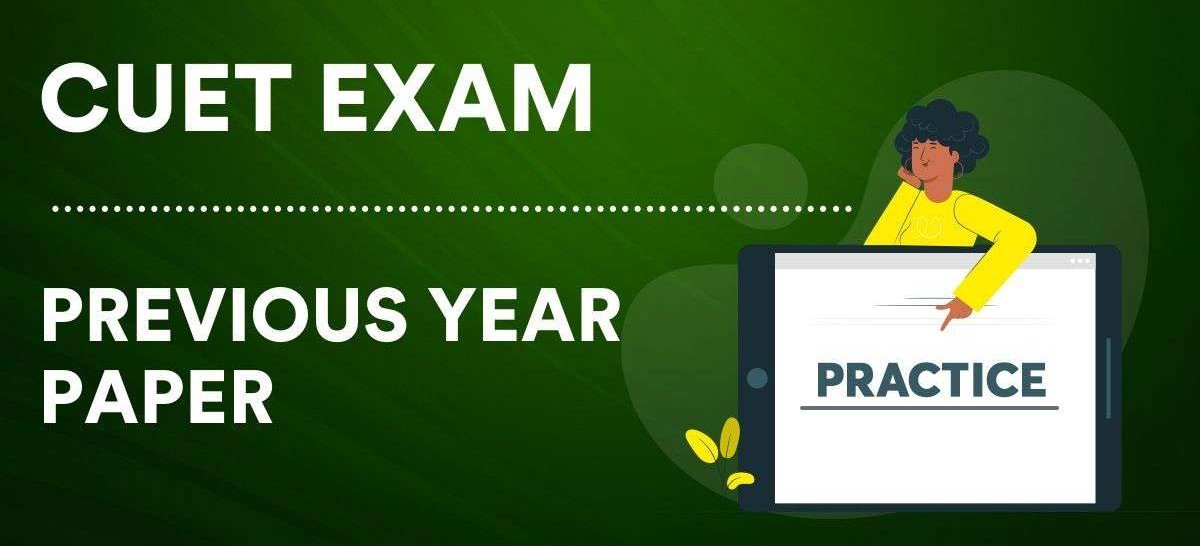NTA CUET is a National Level Entrance exam for all UG and PG Courses conducted by National Testing Agency(NTA) for college entrance. Every student must attempt the previous year’s papers to measure their preparation for the exam. To all the fellow aspirants of CUET 2024, here we are with the CUET History previous year’s paper with the official answer key.
NTA CUET History Previous Year Question Paper PDF Download
To all the students, here are the CUET Previous Year’s Papers for History CUET UG Examination 2024 for your top-notch preparation.
| S.No. | Year |
| 1. | CUET UG 2022 History Previous Year Question Paper |
| 2. | CUET UG 2023 History Previous Year Question Paper |
NTA CUET History Previous Year Answer Key Download
Calculate your score with the given links of NTA official answer keys and note down your weak topics and study them more!
| S. No. | Year |
| 1. | CUET UG 2022 History Previous Year Question Paper Answer Key |
| 2. | CUET UG 2023 History Previous Year Question Paper Answer Key |
NTA CUET History Exam Pattern 2024
The CUET Examination will be conducted in a computer-based test (CBT) mode. The question paper will be strictly based on the NCERT syllabus for class 12 History.
| Subjects | No. of questions to be attempted | Duration of the exam |
| Language (any one language out of 13 languages ) | 40 out of 50 questions. | 45 minutes for each language |
| Domain Subjects (maximum of 6 subjects from those 27 subjects) | 40 out of 50 questions. | 45 minutes for each subject |
| General Test | 60 Questions to be attempted out of 75 | 60 Minutes (1 hour) |
NTA CUET History Marking Scheme 2024
NTA has confirmed the exam pattern & the CUET marking scheme for the upcoming exam in 2024. As per the official CUET notification, 5 marks will be awarded for every correct attempt, and 1 mark will be deducted for every incorrect attempt.
| Total Marks | 200 |
| Correct Answer | +5 |
| Wrong Answer | -1 |
| Unanswered | 0 |
NTA CUET History Exam Syllabus For CUET Exam 2024
In any exam, a student must focus on the syllabus, which is the heart and soul of any examination. To get a good score in CUET History Exam 2024, read the syllabus carefully and make a practical strategy and study hard!
Unit I: The Story of the First Cities Harappan Archaeology
- Early urban centres.
- Story of discovery: Harappan civilization.
- Excerpt: Archaeological report on a major site. Discussion: how it has been utilized by archaeologists/historians.
Unit II: Political and Economic History: How Inscriptions tell a story
- Political and economic history from the Mauryan to the Gupta period.
- Story of discovery: Inscriptions and the decipherment of the script. Shifts in the understanding of political and economic history.
- Excerpt: Asokan inscription and Gupta period land grant.
- Discussion: Interpretation of inscriptions by historians.
Unit III: Social Histories using the Mahabharata
- Issues in social history, including caste, class, kinship and gender.
- Story of discovery: Transmission and publications of the Mahabharata.
- Excerpt: From the Mahabharata, illustrating how it has been used by historians.
Unit IV: A History of Buddhism: Sanchi Stupa
- (a) A brief review of religious histories of Vedic religion, Jainism, Vaisnavism, Saivism.
- (b) Focus on Buddhism.
- Story of discovery: Sanchi stupa.
- Excerpt: Reproduction of sculptures from Sanchi.
- Discussion: Ways in which sculpture has been interpreted by historians, other sources for reconstructing the history of Buddhism.
Unit V: Medieval society through Travellers’ Accounts
- Outline of social and cultural life as they appear in travellers’ accounts.
- Story of their writings: A discussion of where they travelled, why they travelled, what they wrote, and
- For whom they wrote.
- Excerpts: from Alberuni, Ibn Batuta, Bernier.
- Discussion: What these travel accounts can tell us and how they have been interpreted by historians.
Unit VI: Religious Histories: The Bhakti-Sufi Tradition
- (a) Outline of religious developments during this period.
- (b) Ideas and practices of the Bhakti-Sufi saints.
- Story of Transmission: How Bhakti-Sufi compositions have been preserved.
- Excerpt: Extracts from selected Bhakti Sufi works.
- Discussion: Ways in which these have been interpreted by historians.
Unit VII: New Architecture: Hampi
- (a)Outline of new buildings during Vijayanagar period — temples, forts, irrigation facilities.
- (b)Relationship between architecture and the political system.
- Story of Discovery: Account of how Hampi was found.
- Excerpt: Visuals of buildings at Hampi.
- Discussion: Ways in which historians have analysed and interpreted these structures.
Unit VIII: Agrarian Relations :The Ain-i- Akbari
- (a) Structure of agrarian relations in the 16th and 17th centuries.
- (b) Patterns of change over the period.
- Story of Discovery: Account of the compilation and translation of Ain-i-Akbari.
- Excerpt: From the Ain-i-Akbari
- Discussion: Ways in which historians have used the text to reconstruct history.
Unit IX: The Mughal Court: Reconstructing Histories through Chronicles
- (a) Outline of political history c. 15th-17th centuries.
- (b) Discussion of the Mughal court and politics.
- Story of Discovery: Account of the production of court chronicles, and their subsequent translation and transmission.
- Excerpts: from the Akbarnama and Padshahnama.
- Discussion: Ways in which historians have used the texts to reconstruct political histories.
Unit X: Colonialism and Rural Society: Evidence from Official Reports
- (a) Life of zamindars, peasants and artisans in the late18th century.
- (b) East India Company, revenue settlements and surveys.
- (c) Changes over the nineteenth century.
- Story of official records: An account of why official investigations into rural societies were undertaken and the types of records and reports produced.
- Excerpts: From Firminger’s Fifth Report, Accounts of Francis Buchanan-Hamilton, and Deccan Riots Report.
- Discussion: What the official records tell and do not tell, and how they have been used by historians.
Unit XI: Representations of 1857
- (a) The events of 1857-58.
- (b) How these events were recorded and narrated.
- Focus: Lucknow.
- Excerpts: Pictures of 1857. Extracts from contemporary accounts.
- Discussion: How the pictures of 1857 shaped British opinion of what had happened.
Unit XII: Colonialism and Indian Towns: Town Plans and Municipal Reports
- The growth of Mumbai, Chennai, hill stations and cantonments in the 18th and 19th century.
- Excerpts: Photographs and paintings. Plans of cities. Extract form town plan reports. Focus on Kolkata town planning.
- Discussion: How the above sources can be used to reconstruct the history of towns. What these sourcesdo not reveal.
Unit XIII: Mahatma Gandhi through Contemporary Eyes
- (a) The nationalist movement 1918-48,
- (b) The nature of Gandhian politics and leadership.
- Focus: Mahatma Gandhi in 1931.
- Excerpts: Reports from English and Indian language newspapers and other contemporary writings.
- Discussion: How newspapers can be a source of history.
Unit XIV: Partition through Oral Sources
- (a) The history of the 1940s;
- (b) Nationalism, Communalism and Partition.
- Focus: Punjab and Bengal.
- Excerpts: Oral testimonies of those who experienced partition.
- Discussion: Ways in which these have been analysed tore construct the history of the event.
Unit XV: The Making of the Constitution
- (a) Independence and the new nation state.
- (b) The making of the Constitution.
- Focus: The Constitutional Assembly debates.
- Excerpts: From the debates.
- Discussion: What such debates reveal and how they canbe analyzed.
CUET History Syllabus For 2024 Examination is based on the NCERT Class 12th Book Syllabus. So to score good marks and get into the desired college one must study the NCERT Books by heart and practice a bundle of questions. Don’t forget, Practice is the key!
To Know More about CUET History syllabus for 2024 examination.

To Download the PDF of the History CUET UG Exam syllabus, click on the link given below:-
History CUET Exam Syllabus For 2024 PDF Download
Benefits of Solving History Previous Year Papers
It can benefit you in so many ways such as:-
- It helps you to know the CUET Exam Pattern
- It also helps to know your level of preparation for the exam.
- It shows the reality and helps you know your weak syllabus areas.
NTA CUET History Previous Year Question Paper: FAQs
Which colleges are under CUET UG 2024?
There are a total of 260+ colleges and universities that will accept the CUET score.
(44 Central Universities, 44 State Universities, 32 Deemed Universities, 134 Private Universities, and 3 other Universities).
Is the mode of CUET 2024 online or offline?

CUET 2024 examination will be a Computer Based Test conducted by NTA.
What is the medium of examination for the CUET 2024?
The tests (other than “Language Test”) will be offered in 13 languages namely English, Hindi, Assamese, Bengali, Gujarati, Kannada, Malayalam, Marathi, Odia, Punjabi, Tamil, Telugu, and Urdu.
How can I effectively prepare for the CUET 2024 History?
To effectively prepare for the CUET 2024 History examination follow the steps given below:-
1. Stick to the CUET 2024 History syllabus
2. Focus on NCERT Syllabus Properly
3. Maintain Regular Consistency in Your Studies
4. Analyze your Performance on monthly basis
Is Delhi University a part of CUET 2024?
Yes, Delhi University is a part of CUET 2024 , minimum marks for getting admission in DU is 480 out of 800 (top 4 subjects including mathematics).

